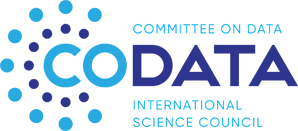 This follow-up discussion workshop was held at 10:00 EDT/16:00 CEST on Wednesday 19 August 2020.
This follow-up discussion workshop was held at 10:00 EDT/16:00 CEST on Wednesday 19 August 2020.
Following the DDI-CDI Data Description Webinar on 12 August (see the presentation and recording
Presentations and Recording
The recording from the Discussion Workshop on Data Description with DDI-CDI may be on our GoToWebinar channel or below.
Discussion Topics for the 19 August 2020 Workshop
1. European Language Social Science Thesuarus (ELSST) and other Thesaurii as Sources of Statistical Concepts – issue raised by Morten Jakobsen, Norwegian Center for Research Data (NSD), Norway
ELSST and other, similar thesaurii provide formally defined terms and concepts which are often used for social science data. At the webinar, the question raised was how such thesaurii could be connected to the data being described with DDI-CDI. Concepts are used in many places (variables, categories, etc.) and having machine-actionable links at the appropriate places is useful.
ELSST can be found at: https://elsst.
2. Units of Measure/Digital Representation of Units of Measure (DRUM) – issue raised by Stuart Chalk, University of North Florida, USA
The standardization of units of measure is important for every type of science when it comes to the integration and harmonizaton of data. Recently, there have been standards initiatives such as DRUM which identify problems and solutions in this area. The question at the webinar was how such work around units of measure can be supported in a data integration framework like DDI-CDI.
Some information about DRUM can be found at: https://codata.org/
3. Funder Assessment Frameworks – issue raised by Nina Lewin, University of Witwatersrand, South Africa
Funders have their own frameworks for managing the outputs of the research they invest in, and data can be a significant output. The question raised at the webinar was how DDI-CDI aligns with such frameworks. The Common European Research Information Format (CERIF) is a European example, but other frameworks are used in other parts of the world. The question is how DDI-CDI can support such frameworks in its description of data (and possibly other aspects of research in the area of process/provenance).
CERIF is part of a European Recommendation, and more information can be found at the links below:
https://www.eurocris.org/
https://www.dcc.ac.uk/
Other Topics from the 12 August 2020 Webinar
These topics will be addressed – along with others that emerge from our discussions – in separate meetings/events.
- Metadata Serialization (XML, RDF, JSON, etc.)
- Description of Chemical Compounds
- Data Types in Statistical Packages/Other Technology Implementations
We look forward to discussing these topics on 19 August. All interested parties are welcome to attend.
